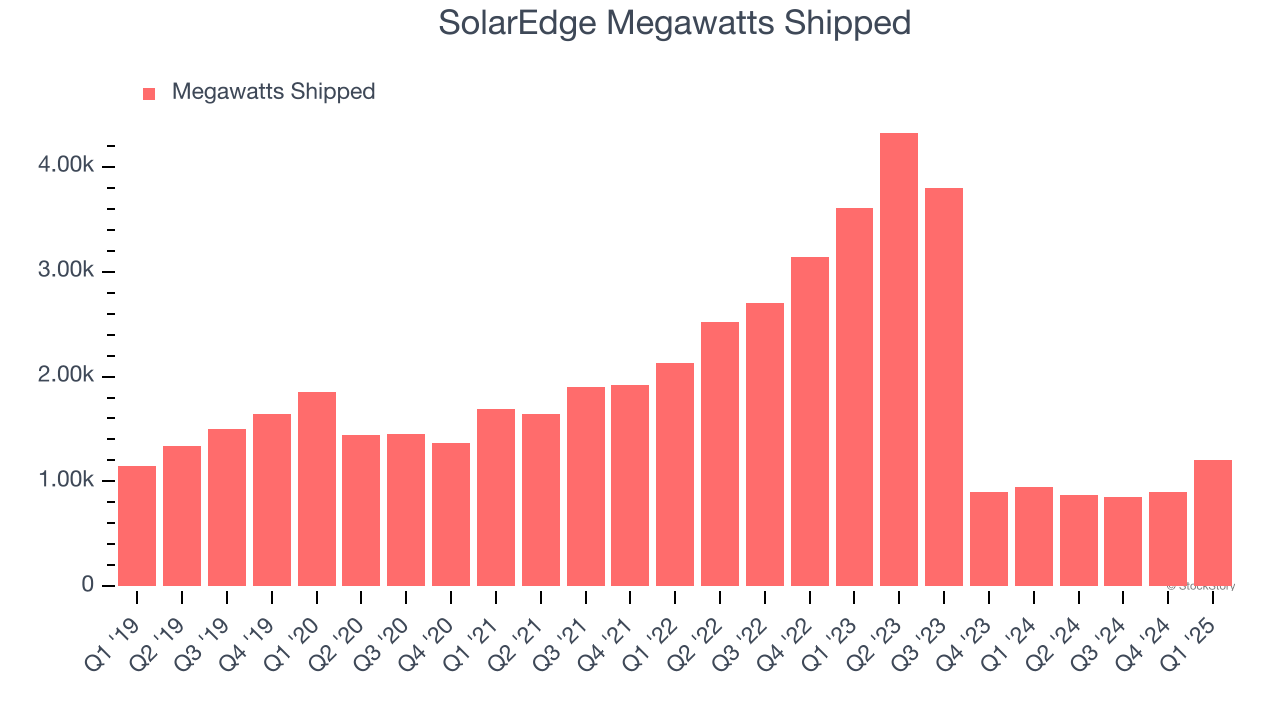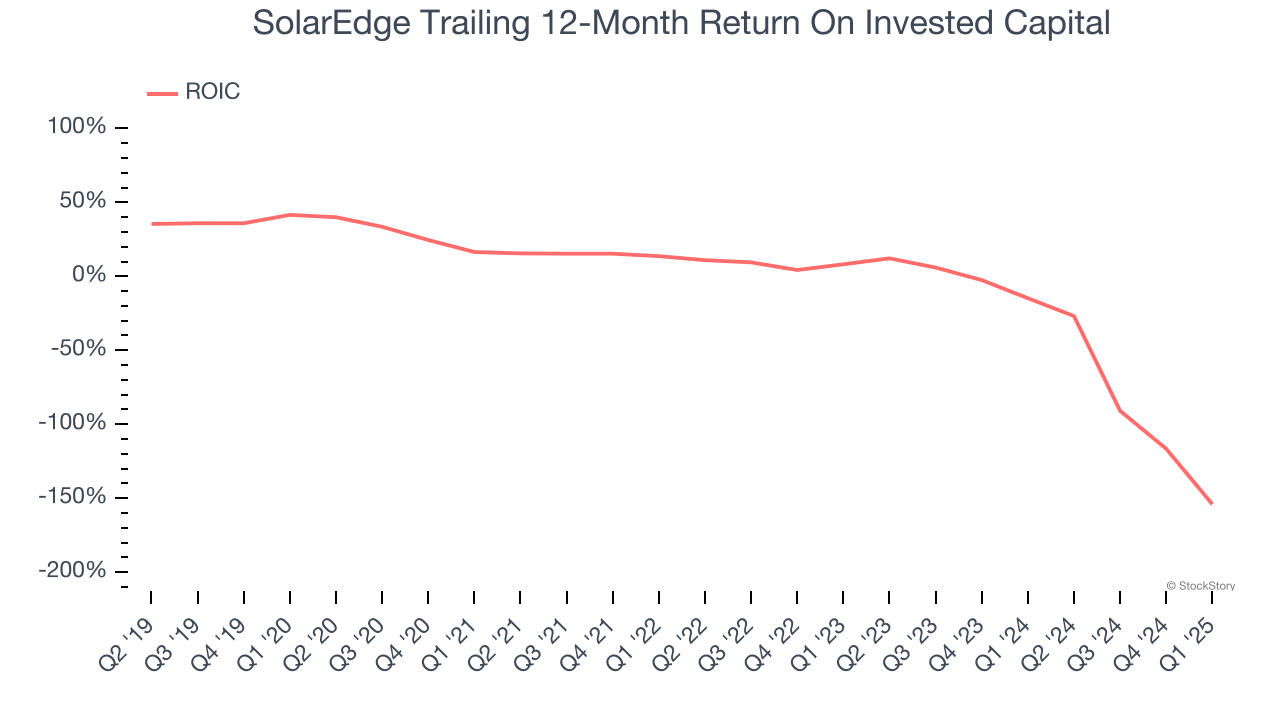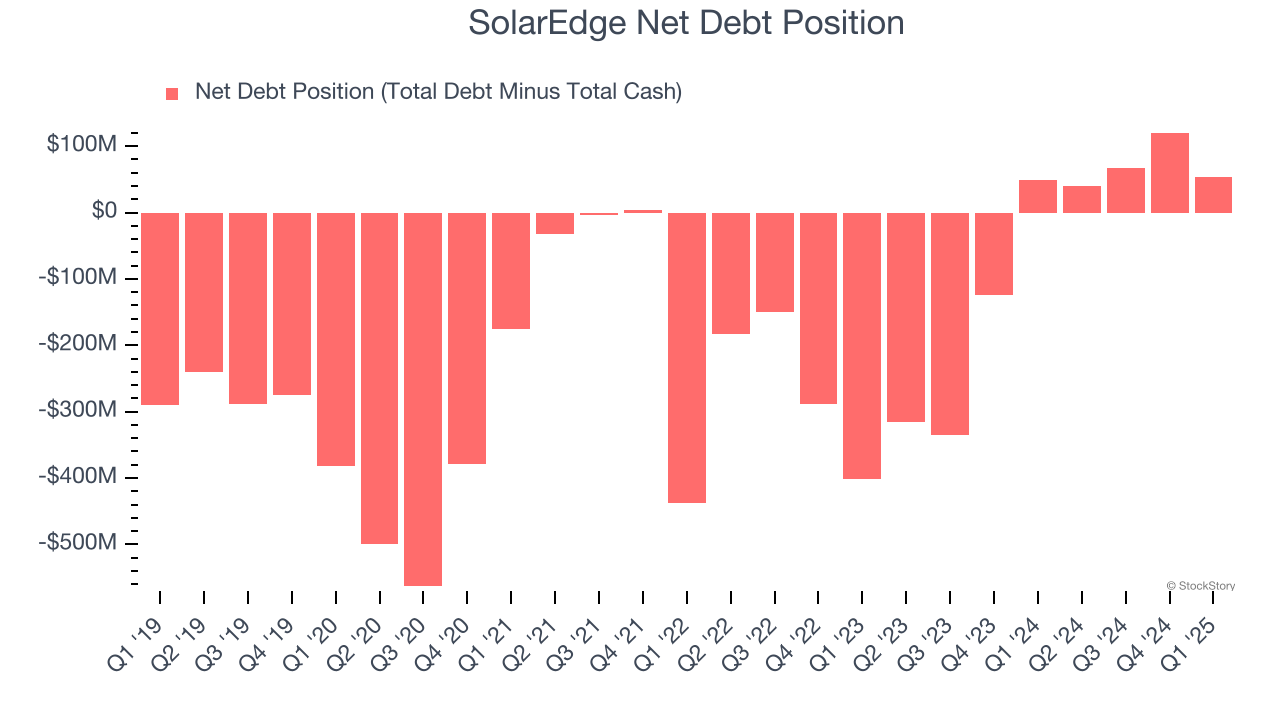
The past six months have been a windfall for SolarEdge’s shareholders. The company’s stock price has jumped 90.6%, hitting $27.56 per share. This was partly due to its solid quarterly results, and the performance may have investors wondering how to approach the situation.
Is there a buying opportunity in SolarEdge, or does it present a risk to your portfolio? Get the full stock story straight from our expert analysts, it’s free.
Why Do We Think SolarEdge Will Underperform?
We’re glad investors have benefited from the price increase, but we're cautious about SolarEdge. Here are three reasons why you should be careful with SEDG and a stock we'd rather own.
1. Decline in Megawatts Shipped Points to Weak Demand
Revenue growth can be broken down into changes in price and volume (for companies like SolarEdge, our preferred volume metric is megawatts shipped). While both are important, the latter is the most critical to analyze because prices have a ceiling.
SolarEdge’s megawatts shipped came in at 1,208 in the latest quarter, and over the last two years, averaged 20.4% year-on-year declines. This performance was underwhelming and implies there may be increasing competition or market saturation. It also suggests SolarEdge might have to lower prices or invest in product improvements to grow, factors that can hinder near-term profitability. 
2. New Investments Fail to Bear Fruit as ROIC Declines
ROIC, or return on invested capital, is a metric showing how much operating profit a company generates relative to the money it has raised (debt and equity).
We like to invest in businesses with high returns, but the trend in a company’s ROIC is what often surprises the market and moves the stock price. Over the last few years, SolarEdge’s ROIC has unfortunately decreased significantly. Paired with its already low returns, these declines suggest its profitable growth opportunities are few and far between.

3. Short Cash Runway Exposes Shareholders to Potential Dilution
As long-term investors, the risk we care about most is the permanent loss of capital, which can happen when a company goes bankrupt or raises money from a disadvantaged position. This is separate from short-term stock price volatility, something we are much less bothered by.
SolarEdge burned through $154.4 million of cash over the last year, and its $705.2 million of debt exceeds the $651.6 million of cash on its balance sheet. This is a deal breaker for us because indebted loss-making companies spell trouble.

Unless the SolarEdge’s fundamentals change quickly, it might find itself in a position where it must raise capital from investors to continue operating. Whether that would be favorable is unclear because dilution is a headwind for shareholder returns.
We remain cautious of SolarEdge until it generates consistent free cash flow or any of its announced financing plans materialize on its balance sheet.
Final Judgment
SolarEdge falls short of our quality standards. After the recent surge, the stock trades at $27.56 per share (or a forward price-to-sales ratio of 1.4×). The market typically values companies like SolarEdge based on their anticipated profits for the next 12 months, but it expects the business to lose money. We also think the upside isn’t great compared to the potential downside here - there are more exciting stocks to buy. Let us point you toward one of our top digital advertising picks.
Stocks We Like More Than SolarEdge
The market surged in 2024 and reached record highs after Donald Trump’s presidential victory in November, but questions about new economic policies are adding much uncertainty for 2025.
While the crowd speculates what might happen next, we’re homing in on the companies that can succeed regardless of the political or macroeconomic environment. Put yourself in the driver’s seat and build a durable portfolio by checking out our Top 5 Strong Momentum Stocks for this week. This is a curated list of our High Quality stocks that have generated a market-beating return of 183% over the last five years (as of March 31st 2025).
Stocks that made our list in 2020 include now familiar names such as Nvidia (+1,545% between March 2020 and March 2025) as well as under-the-radar businesses like the once-micro-cap company Kadant (+351% five-year return). Find your next big winner with StockStory today.
StockStory is growing and hiring equity analyst and marketing roles. Are you a 0 to 1 builder passionate about the markets and AI? See the open roles here.




